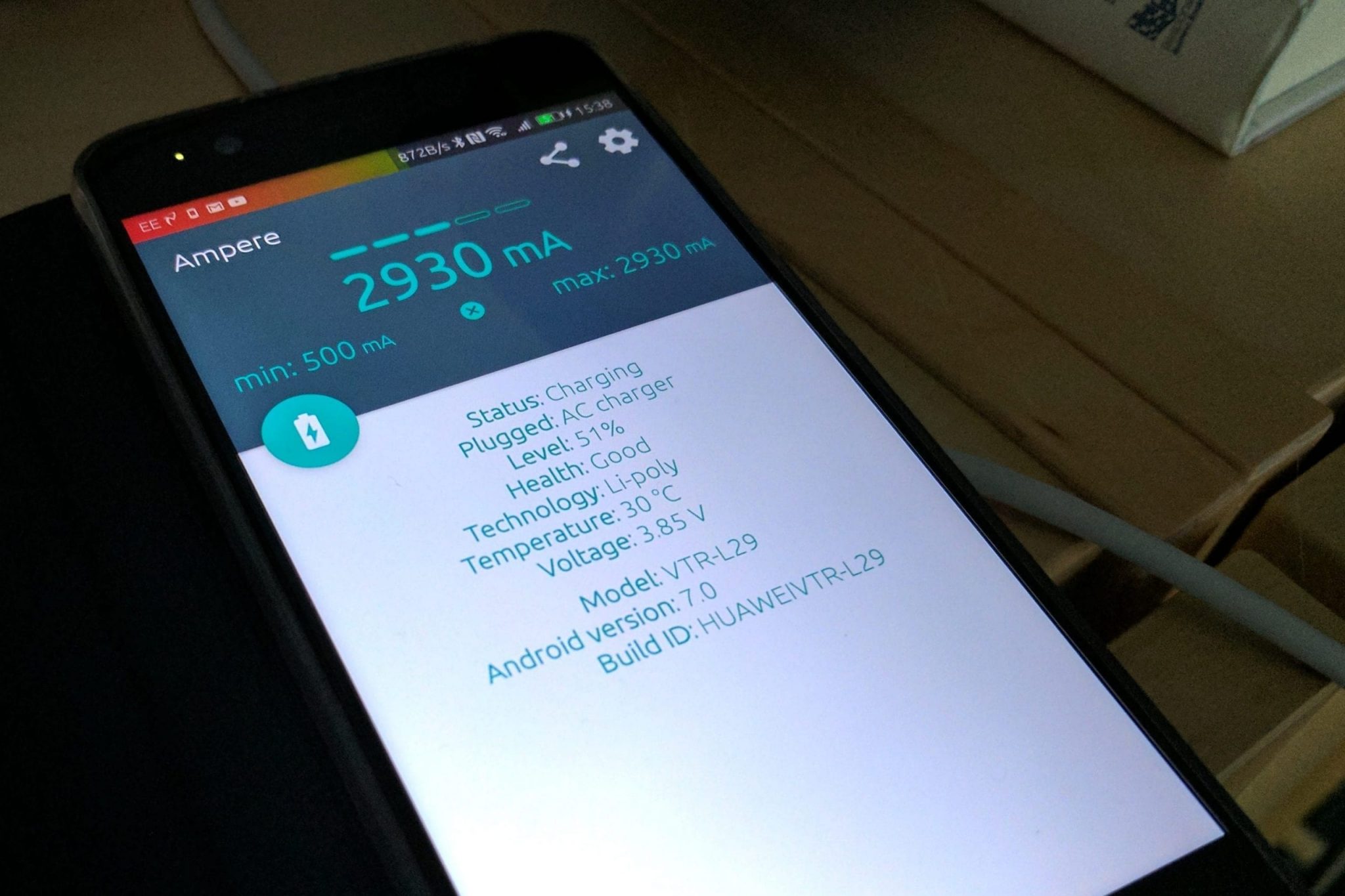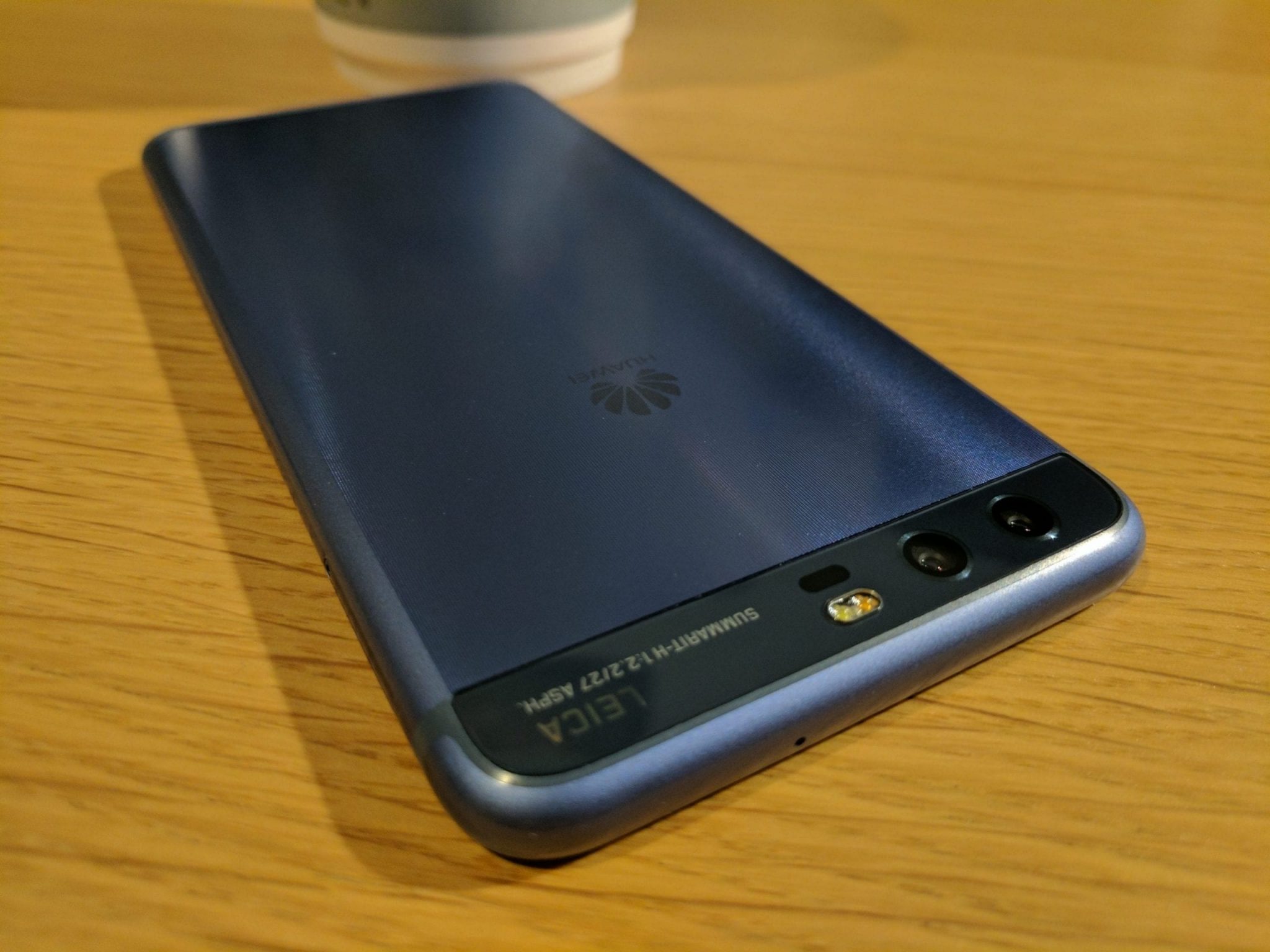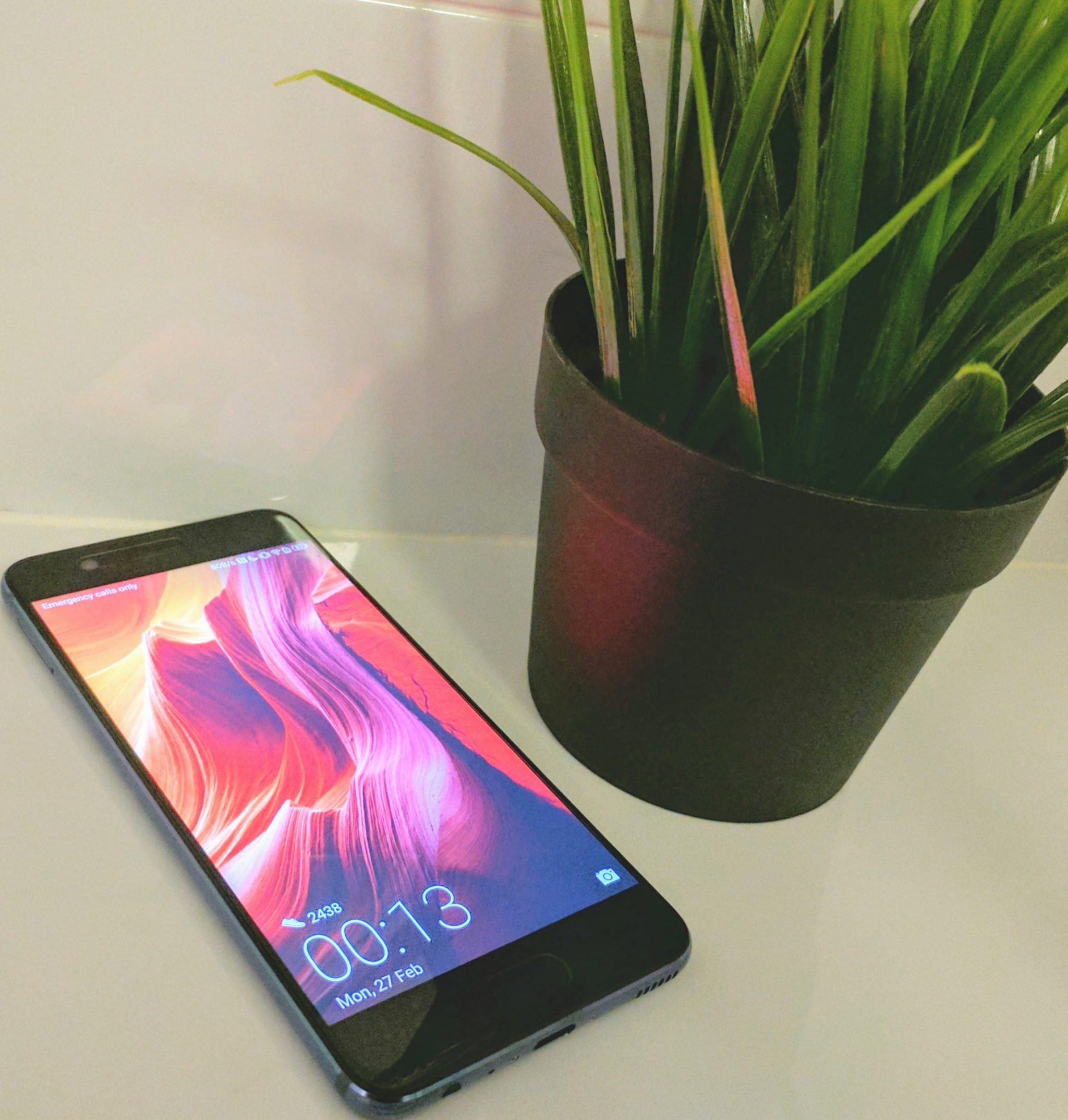
Huawei P10 Review: Evolution that’s quite the revolution
Huawei’s P10 and P10 Plus are about to hit the stores any day now, so to help you decide whether to place an order, here’s my review of the P10 – along with some comparisons with the bigger P10 Plus.
The P10 is the version with a 5.1-inch full-HD screen and the now standard Leica dual-camera setup we’ve come to expect from the ever-growing Chinese smartphone manufacturer.
One year on from when Huawei and Leica first formed their alliance, is it still as capable in the world of smartphone photography? Read on to hopefully find out.

Design
First of all, there’s the obvious question for every manufacturer releasing an annual update of a phone. How do you it exciting and fresh, while not changing so much that you risk alienating existing users who liked the earlier model for features you better not have messed around with.
It’s a big problem. Change too little and you’ll get accused of having done too little, but change lots and you’ll be accused or ruining a winning formula.
The P10 actually looks like a pretty minor upgrade of last year’s P9, but there are a few changes to mention.
On the back, there is a different finish below the camera bar on the various colours that the phone will be available in. Colours including a bright blue and green finish endorsed by Pantone (that’s the company that ensure precise colour matching in the print industry, not the one that makes hair care products).

It seems manufacturers are now desperate to produce as many different colours and finishes as possible, which is great for giving choice in an era where clip-on covers are ancient history, but realistically, only a handful of choices will likely make the high-street.
The model I had for review is the blue one that, as well as some other colour variants, has a ‘hyper diamond cut’ metal finish that promises to not only be strong and rugged, but also hiding fingerprints (if only the front fared as well).
It feels like a nail file to the touch, but there are versions with a smoother finish on offer too.

Back to front
This time there’s no fingerprint sensor on the back either, mirroring the Porsche Designed Mate 9 and Mate 9 Pro models released at the end of 2016. The sensor has shifted around to the front, in a place favoured by the likes of Samsung, HTC, Motorola and, of course, Apple.
The sensor is a multi-function button, allowing a tap to go back, holding to go home, and a swipe left or right to bring up the recent apps. Or it can be used to unlock only.
On the front you’ll find another subtle change, as Huawei has removed its logo – perhaps as a statement of confidence that people will now recognise Huawei phones by design language alone.
Case in point
Good as I found the design, I still like to invest in cases. In my case (sic) a third-party accessory from Amazon (see above), but Huawei itself will be releasing a range of covers, including windowed covers that can display key information without the need to open the flip, as well as allowing you to answer calls, or manage music.
Huawei also includes a simple perspex case in the box, which is a nice freebie.
There will also be other accessories, like in-car holders and Leica-branded classic covers, although it’s not clear how many of these will come out in the UK at launch.
Very few phones I own aren’t protected by a case of some sort, and if you’re about to drop £560-600 on this phone, then no matter how nice the phone is in naked form, you really should be seeking protection.
The phone comes with a screen protector too, but with no oleophobic coating, and my attempt to buy a glass one (my favoured option) proved fruitless as they can’t cover the whole display (reduced in width because of the curvature of the edges that would otherwise see the cover lift off).

A word of warning; keep some wipes with you at all times because the screen cover picks up fingerprints like crazy. And if you’re tempted to remove the screen protection, be warned that there’s no oleophobic coating applied to the screen there either.
For the P10 there’s another good reason to use a case. Despite Huawei not using a curved edge display as suggested in early leaked photos, the 7mm thick phone means it is surprisingly easy to accidentally touch the edge of the display when holding the phone in landscape mode (like when taking photos).
Perhaps a future software update will improve the rejection of accidental touches at the screen edges, but for now a case solves the problem with the minimum of fuss, and other benefits to boot.
Please Huawei, stop striving to make your phones ever thinner and pay attention to usability instead. A thicker phone also allows for a bigger battery, so there’s that too.
Performance
One weakness of Huawei phones until the end of last year was GPU performance. No matter how good its HiSilicon Kirin chips were for most things, graphical performance was always a reason overall benchmark scores fell down.
Not really a problem for a sizeable number of phone users who aren’t big gamers, but it was still something Huawei had to address, if only because it cost them bragging rights in just about every phone comparison test.
Think benchmarks don’t matter? Try telling that to the companies that do badly in the league tables.
With the Mate 9 release came the latest Kirin 960 chipset and a massive leap in GPU performance. Perhaps still not class-leading, but certainly a major catch-up and signs that Huawei listened to comments within many reviews and comments from users for some time.
The P10 uses the same Mate 9 Kirin 960 chip, with identical specs. That’s four 2.4GHz Cortex A73 cores and four 1.8GHz Cortex A53 cores, with a Mali G71 MP8 GPU.
4GB of RAM on the P10 proved plenty for me (the phone showing the average usage as being under 3GB), and while the phone comes with a choice of 32GB or 64GB of internal storage, UK users should find they only get the 64GB for sale, which is fine for most people.
The P10 Plus in the UK will come with 6GB of RAM and 128GB of internal storage, at around £100 more.
A memory card slot is also included, although for the dual-SIM models this means the usual process of having to choose between a second SIM or memory expansion. Why Huawei hasn’t been able to change this is beyond me, as I’d sooner not have to choose one over the other.
The P10, like the P9, makes do with a single down-firing speaker. The Mate 9 has the edge here with audio playback via the earpiece too, in landscape mode, to improve audio playback from the phone.
Nevertheless the single speaker is loud enough, even if it won’t win any awards. For some reason, few manufacturers are packing in powerful speakers these days, favouring thinner designs instead. Regular users of public transport are probably breathing a sigh of relief at this news.

Communication
It’s perhaps too easy these days to forget to even mention the performance of a smartphone as, well you know, a phone.
The P10, like most Huawei phones, consistently pulls in a signal well. The use of the LTE Discovery app regularly shows a higher signal quality than other models, which is great. HD Voice quality is good, and the earpiece is nice and loud – with a sound boost mode if you push the volume all the way to the top.
The P10 also supports VoLTE and Voice over Wi-Fi (Wi-Fi Calling), but this is where things became unstuck, as I used the phone on EE’s network. (I also used a Three SIM in the phone, but Wi-Fi Calling is disabled for the time being).
The P10 simply doesn’t work with Wi-Fi Calling properly at the time of me posting this review.
I could always hear the other party, but they never heard me. It’s an issue Huawei is apparently well aware of, with EE pushing hard to get fixed in time for the phone release.
An EE insider also told me that there has been an unacceptable level of dropped calls on network testing with the P10 on VoLTE (aka EE’s 4G Calling, Three’s Supervoice etc) over just about every other phone it sells.
For the time being, I’ve disabled Wi-Fi Calling and await an update. At the time of publishing this review, the P10 is running B113 firmware, but as the phone is still not officially on sale, fingers crossed this problem will not be an issue for long.

Camera
Stills
The main focus for the P10 is without a doubt its camera. Huawei might also be doing deals with other companies, like GoPro for its updated gallery app (producing automatically created photo albums for your day-to-day activities), but the deal with Leica has seen the launches of new phones look like Leica has had as much to do with the handset as Huawei itself.
The P9 was a game changer in this regard. Not because it had the best image sensors in the space, but because it had such a well-polished camera app, taking onboard the best features from Leica cameras, including the excellent monochrome mode, filters, colour profiles and more.
Sure, some cynics point out that Leica is just lending its name to Huawei to add credibility, but there is clearly more to it than that. Yes the optics are made by someone else, but Leica insists it has had heavy involvement to ensure a high level of quality control, as well as giving the camera interface a recognisable look and feel from the world of Leica cameras.

Coupled with previous, but updated, Huawei features like night shot, time-lapse, light painting and the wide-aperture modes, the P9 was an exceptional choice for photography fans.
The P9 (and later the Honor 8) used two 12-megapixel optically stabilised sensors (one monochrome, the other colour) and the P10, like the Mate 9, uses a 20-megapixel monochrome sensor with a 12-megapixel colour sensor.
Both come with a f/2.2 lens, whereas the larger P10 Plus has a f/1.8 lens that promises better low-light performance. There’s phase detection autofocus and laser autofocus, plus a dual-tone LED flash.
When selecting monochrome, the level of detail (even in low-light) is nothing short of amazing. Colour photos are not quite as detailed, and there’s definitely noticeable noise on dark photos, but the overall experience is still excellent.
You can just fire up the camera and take a normal photo without hassle, but the camera interface encourages you to experiment. Just changing the colour profiles can have an instant effect, like making outdoor photos more vivid, or just about everything more classy with the smooth colour profile.
Enabling the wide aperture mode allows you to have even more fun, with the ability to adjust the settings afterwards. Is the background too blurry, or not blurry enough? Tap tap, done.
Don’t like the effect? Another tap and slide, and you’re saving the normal, non-blurred, shot instead.
Example Photos


The P10, like the P10 Plus and Mate 9, also comes with a 2x hybrid zoom that Huawei claims to be virtually lossless. It then goes on to 10x zoom, but that most certainly is NOT lossless, and I soon wished there was an option to prevent me accidentally zooming too far.
At night, find a way to hold the phone steady and the night mode will get a great photo in virtual darkness. With exposures of up to 30 seconds, the only problem occurs when there’s movement – but some of the modes thrive on movement, like the light trails mode.
Go on, have some fun. It’s far better than a camera interface that just lets you adjust the exposure and that’s about it.
For selfies, there’s a 8-megapixel f/1.9 camera, and the camera app now has a new portrait mode to give photos a similar look and feel to that of the iPhone. As with earlier Huawei phones, including the Nova and Nova Plus, you can adjust the beauty mode settings to soften or sharpen images, and add artistic effects.
The results can be mixed, and I have to confess that I am yet to properly play around with the new portrait mode. Here are some quick samples that I did, indoors. I may post more in the future, so check back later.
Example Photos

Video
The P10 video recording now has Ultra-HD as a recording option, like the Mate 9, but doesn’t have the same advanced audio features the Mate 9 does, where you can select different modes and ‘target’ where the audio is coming from, like concentrating on the subject in front of the camera or all the sounds around you.
Instead you get a normal audio pick up, which is fine and simply picks up what’s in front as you’d expect.
The time-lapse function is a nice feature, but I couldn’t see any way to customise the settings to control the overall speed. Video is also limited to 720p in this mode. Slow motion capture allows video at 1080p, with 120 frames per second. Not quite the 960 frames per second as offered on the new Sony Xperia XZs and XZ Premium phones.
A word of warning: The P10 and P10 Plus, like the Mate 9, record Ultra-HD video in H.265, which is the latest codec to maintain maximum quality at the lowest possible file sizes. It’s the future, and with that comes a problem. As yet, Google does not recognise H.265 video files, so when you back up to Google Photos, or upload to YouTube, the video will be corrupted.
There are ways to convert the video via a PC or Mac to the older H.264 codec, while some video editors can work with the files natively (such as the cloud-based WeVideo service) but be very careful if backing up to Google Photos, and then using the feature to make space on your phone. Do so and you risk deleting the original video and being left with an unplayable version in the cloud.
To make sure videos are safe, back them up to Google Drive manually or side-load your files to a desktop instead.

Camera summary
You can add more camera modes via download, including a good food mode, water mark, and an excellent document scanner (which straightens pages and enhances text automatically) that’s a must, allowing you to scan business cards, menus or any other documents you may wish to work with later.
In my two recent group tests (day and night), putting the P10 up against the Mate 9 and last year’s P9, the Mate 9 appears in many cases to have the edge. It’s not clear exactly why, given the cameras are meant to be the same hardware wise.
The only difference being the two image sensors are stacked above and below on the Mate 9, which might mean slightly different algorithms on post-processing (or just as likely may not). It could also be something that will be addressed with a future software update.
Battery Life and General Usability
Battery life is an important selling point these days. Thank goodness the industry has woken up and realised people do care about how long their device lasts.
The 3,200mAh battery falls short of the monster 4,000mAh battery in the Mate 9, but then the screen is much smaller too.
In just over two weeks of usage, I’ve found the battery averaging around 12-14 hours between charges, with an average of 3 hours screen on time. With the optional power saving mode, which restricts CPU performance, and limits some background tasks, it’s possible get a few more hours standby.
A lot of my usage has been outdoors too, where the automatic brightness control often pushes things to the max. Turn down the brightness, enable the power saving mode and restrict background data usage, and I have no doubt you could stretch to 18 hours – more than enough for a full working day and then into the evening.

It’s good, but the phone’s own battery monitor appears to show that Android Doze doesn’t work, reporting the phone as awake all the time. This is rather odd, as a phone that never sleeps could not last as it does.
This may be another pre-release gremlin that needs to be sorted, although even with the phone showing as ‘awake’ all the time, it’s clearly lasting the hours and so it’s not something to be too worried about.
Charging is quick too, with a Super Charge power adapter supplied in the box. The phone can also be fast charged (just not as fast) with a USB-PD charger, such as the power supply that comes with the Google Pixel and Pixel XL. In fact, Huawei appears to have a range of charge modes, from normal to fast to super charging.
I will return to this review to update in the future and say if any further updates improve (or worsen) the battery.

It’s been Emotional
Emotion UI (EMUI) is something I expect all my readers are now very well aware of if having read any previous handset reviews, whether Huawei or Honor branded. I won’t explain it all again here, other than to say that the P10 comes with EMUI 5.1, a step up from the version on the Mate 9, which has new software to predict usage and manage RAM more effectively.
EMUI 5 promised to learn your behaviour to better manage apps and adjust performance ahead of time, and the P10 certainly never lags. Ever. It’s quite scary, as even my Google Pixel XL has its moments where everything is on a go-slow. A reboot fixes that, but the P10 just keeps chugging along like it’s on speed.
Background apps not in use, or consuming excess power, can be terminated automatically. To use this feature effectively, you will need to whitelist apps that you don’t want killed, like widgets that update the home screen, apps that connect to wearables, or anything that requires regular updating.
While most Google apps will sync even if the main app isn’t running, things like Facebook and Facebook Messenger need to keep running. If you try and select these to shut down, you’ll be given a warning.
More advanced options can also let you control which apps have access to Wi-Fi data and mobile data, but after a while it all seems rather too much to deal with. I am sure that with the time set aside to go through each app in turn, you could probably squeeze even more battery life from the phone.
If you are considering this phone and already own another Huawei or Honor phone you’ve configured before, you can use the excellent Phone Clone app to not only move over all your apps (and data) but also every setting, meaning the power management options will copy over with everything else too.
Previous versions of EMUI tried to look very Apple-like in appearance, so it’s nice that things now look a lot more like Android. Customising the top row of shortcuts from the pull-down notification window is great, and now the whole settings menu is a lot easier to navigate.
The phone also allows split screen viewing, but not the adjustment of the screen DPI; features reserved for larger screened models, which includes the P10 Plus and Mate 9 (plus the Honor 5X, 6X and Huawei nova plus).
It’s still not native Android by any stretch of the imagination, and you may still want to add your own launcher, but it’s a vast improvement – especially now you have the option to an app drawer to the default launcher. EMUI is no longer something to tolerate, but actually a nice custom skin that doesn’t impact on performance.

Summary
The P10 can’t quite muster up the same excitement as the P9 launch, but that doesn’t in any way detract from the fact the P10 is a worthy successor that improves on many key areas.
A QHD resolution would have been wasted on the 5.1-inch display, doing nothing but putting the GPU under more stress than necessary, and I quickly became a convert to the fingerprint sensor positioning that initially had me going ‘oh please God no!’.
My muscle memory now has me trying to press in the same place on every phone I pick up, which shows how easy it is to adapt. I really appreciate the simplicity of having one button for three action, and the fact the reader is lightning quick to unlock makes it all the better still.
If, however, you didn’t think you’d get on with it, you can use it as a bog-standard fingerprint sensor to unlock only, putting the three buttons back on the screen instead.

The camera functionality has also progressed nicely, and even though the Google Pixel and Pixel XL may give a cleaner image, I prefer the multiple camera modes, filters and colour profiles that Huawei gives users.
The wide aperture mode can be used to great effect time and time again, bringing even the most mundane of photos to life. The monochrome mode isn’t just a silly gimmick, as it can be used to great effect with an incredible level of detail in all weathers.
Yes you can get third-party camera apps for other phones, but the P10 has everything you could possibly want out of the box, allowing you to be as creative as you want, and squeezing out the best from even the most amateur photographer.
Pluses and minuses
If there’s one gripe, it’s that you’ll need to shell out an extra £100 for the Huawei P10 Plus to get the f/1.8 aperture lenses that should improve the low-light performance and make the experience even better.
At between £560-£600, the Huawei P10 isn’t as expensive as some rival flagships, but nor is it as affordable as – say – the Honor 8. At just £320, the Honor 8 has twin 12-megapixel cameras (but no dedicated monochrome mode) and performs more or less like the P9. Yes, that means a slower processor, slightly smaller battery and 300Mbps 4G download speeds (max) instead of 600, but it does mean the P10 is quite a leap in investment.
However, if you’re looking for the best Huawei currently has to offer then the P10 delivers the best of what the company has to offer, while the P10 Plus offers that bit more for those wanting a larger screen and a (potentially) even better camera experience. There is of course also the Mate 9 for those who want the biggest screen of all, including a few extra features over both P10 models.
For me, the P10 combines great performance with the ultimate portability, and my only gripes come from some software issues that Huawei should hopefully fix any day now, and the need to keep cleaning the display.
Hopefully software updates will fix the former, while I’m working on a solution to the latter. It mostly involves screen wipes…
| Good Points | Bad Points |
|
|
Review Notes
- In the photos, I am running a third-party app called Energy Bar, which uses the notification bar at the top to show remaining power in a visual form. The app offers a number of different setups, with full customisation, on the paid version. This app was added only after monitoring battery life to get the figures used in the above review.
- The system font has been changed, using one of many downloaded EMUI-compatible fonts from Xda-developers.com.
- The launcher used is Nova Launcher.
Key Specs
- 145.3×69.3x7mm / 145g
- 5.1-inch Full HD LCD display (1920×1080 pixels)
- Android 7 Nougat with EMUI 5.1
- Kirin 960 Octa-core CPU + Mali-G71 GPU
- Cat 12 LTE (600Mbps/150Mbps)
- 32 or 64GB internal storage + microSD
- 4GB RAM
- Dual 20+12MP f/2.2 camera (rear), OIS / 8MP f/1.9 camera (front)
- 4K video recording
- Dual-band Wi-Fi
- Front fingerprint sensor with multi-function control
- 3,200mAh battery
- Supercharge support























Strong battery life? I am only getting over 3 hours of screen on time with my phone.